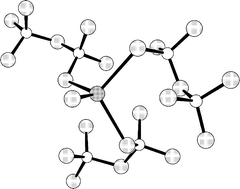Structural and electrical characterisation of Li2O ∶ TiO2 ∶ SnO2 ∶ P2O5 electrolyte glass†
Abstract
Glasses of general formula 50Li2O ∶
xSnO2
∶
(10 −
x)TiO2
∶ 40P2O5
(0.0 ≤
x
≤ 10) were investigated by

a Centre for Materials Research, Department of Chemistry, University of London, Queen Mary, Mile End Road, London, UK
b Faculty of Physics, Warsaw University of Technology, ul. Koszykowa 75, 00-662 Warszawa, Poland
Glasses of general formula 50Li2O ∶
xSnO2
∶
(10 −
x)TiO2
∶ 40P2O5
(0.0 ≤
x
≤ 10) were investigated by

 Please wait while we load your content...
Something went wrong. Try again?
Please wait while we load your content...
Something went wrong. Try again?
I. Abrahams, E. Hadzifejzovic and Józef. R. Dygas, Dalton Trans., 2004, 3129 DOI: 10.1039/B401582G
To request permission to reproduce material from this article, please go to the Copyright Clearance Center request page.
If you are an author contributing to an RSC publication, you do not need to request permission provided correct acknowledgement is given.
If you are the author of this article, you do not need to request permission to reproduce figures and diagrams provided correct acknowledgement is given. If you want to reproduce the whole article in a third-party publication (excluding your thesis/dissertation for which permission is not required) please go to the Copyright Clearance Center request page.
Read more about how to correctly acknowledge RSC content.
 Fetching data from CrossRef.
Fetching data from CrossRef.
This may take some time to load.
Loading related content
